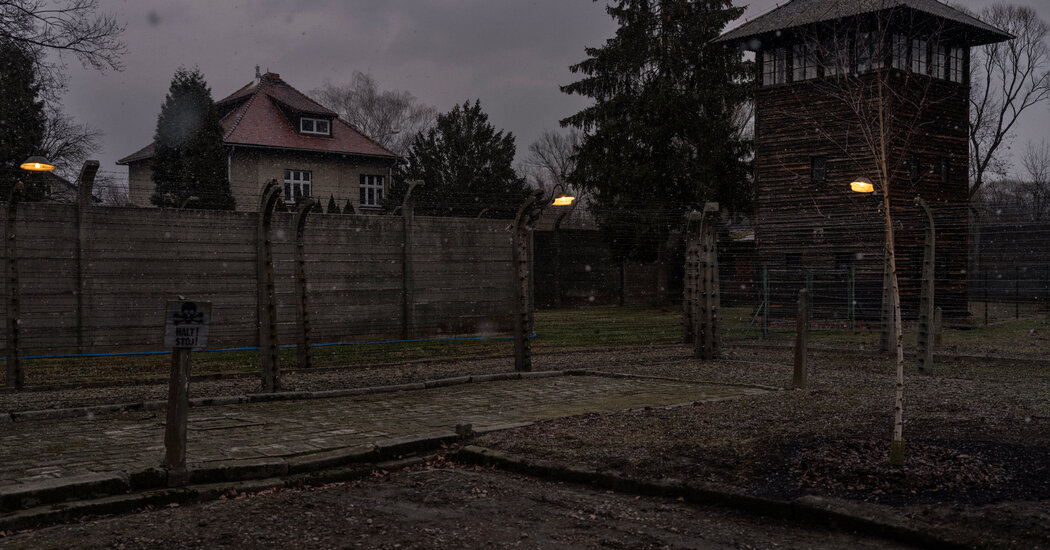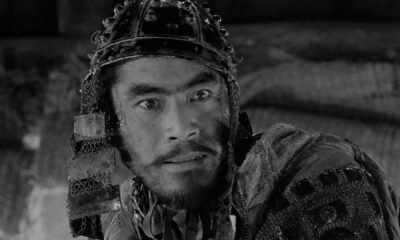Breaking News
A House at Auschwitz Opens Its Doors to a Chilling Past

Living in a three-story house in Oswiecim, southern Poland, for 42 years, overlooking a former gas chamber and gallows at Auschwitz, the mother sometimes lost sleep at the thought of the atrocities that had taken place on the other side of her garden wall. Grazyna Jurczak, 62, a widow who raised two sons in the home once belonging to the death camp’s wartime commandant, Rudolf Höss, described it as a “great place to raise children.” She mentioned the safety, silence, beautiful garden, easy access to a river, and even space for an ice-skating rink in the winter.
Alone in the house after her husband passed away, she eventually decided to leave due to people trespassing on her property after watching “The Zone of Interest,” a movie about the house. In August, Ms. Jurczak sold the house to the Counter Extremism Project, a New York-based organization aiming to open the house to visitors. The sale was completed in October, including an adjacent house built after the war.
Ms. Jurczak now resides in a modern apartment block in Oswiecim, a mile from her former house, reflecting on the difficult decision to leave. The Counter Extremism Project, led by Mark Wallace, acquired the property with plans to open it to the public for the first time, coinciding with the 80th anniversary of the Soviet Army’s liberation of Auschwitz.
The Auschwitz-Birkenau State Museum will host world leaders on Jan. 27, and preparations are underway at the former commandant’s house for public visits. The property is being restored to its original state during Rudolf Höss’s residency, including a mezuzah on the front door frame to pay tribute to Jewish tradition.
The house, located at 88 Legionow Street just outside the camp’s perimeter, will serve as the Auschwitz Research Center on Hate, Extremism, and Radicalization. Plans include redesigning the property by American architect Daniel Libeskind, focusing on engaging with contemporary antisemitism and extremism.
Piotr Cywinski, director of the Auschwitz-Birkanau Museum, expressed support for the project, emphasizing the importance of combating extremism in today’s society. The new center aims to utilize the historical significance of the house to address present and future challenges of extremism.
-

 Destination7 months ago
Destination7 months agoSingapore Airlines CEO set to join board of Air India, BA News, BA
-

 Breaking News8 months ago
Breaking News8 months agoCroatia to reintroduce compulsory military draft as regional tensions soar
-

 Tech News11 months ago
Tech News11 months agoBangladeshi police agents accused of selling citizens’ personal information on Telegram
-

 Breaking News9 months ago
Breaking News9 months agoBangladesh crisis: Refaat Ahmed sworn in as Bangladesh’s new chief justice
-

 Guides & Tips9 months ago
Guides & Tips9 months agoHave Unlimited Korean Food at MANY Unlimited Topokki!
-

 Gaming8 months ago
Gaming8 months agoThe Criterion Collection announces November 2024 releases, Seven Samurai 4K and more
-

 Toys11 months ago
Toys11 months ago15 of the Best Trike & Tricycles Mums Recommend
-

 Productivity10 months ago
Productivity10 months agoHow Your Contact Center Can Become A Customer Engagement Center
























